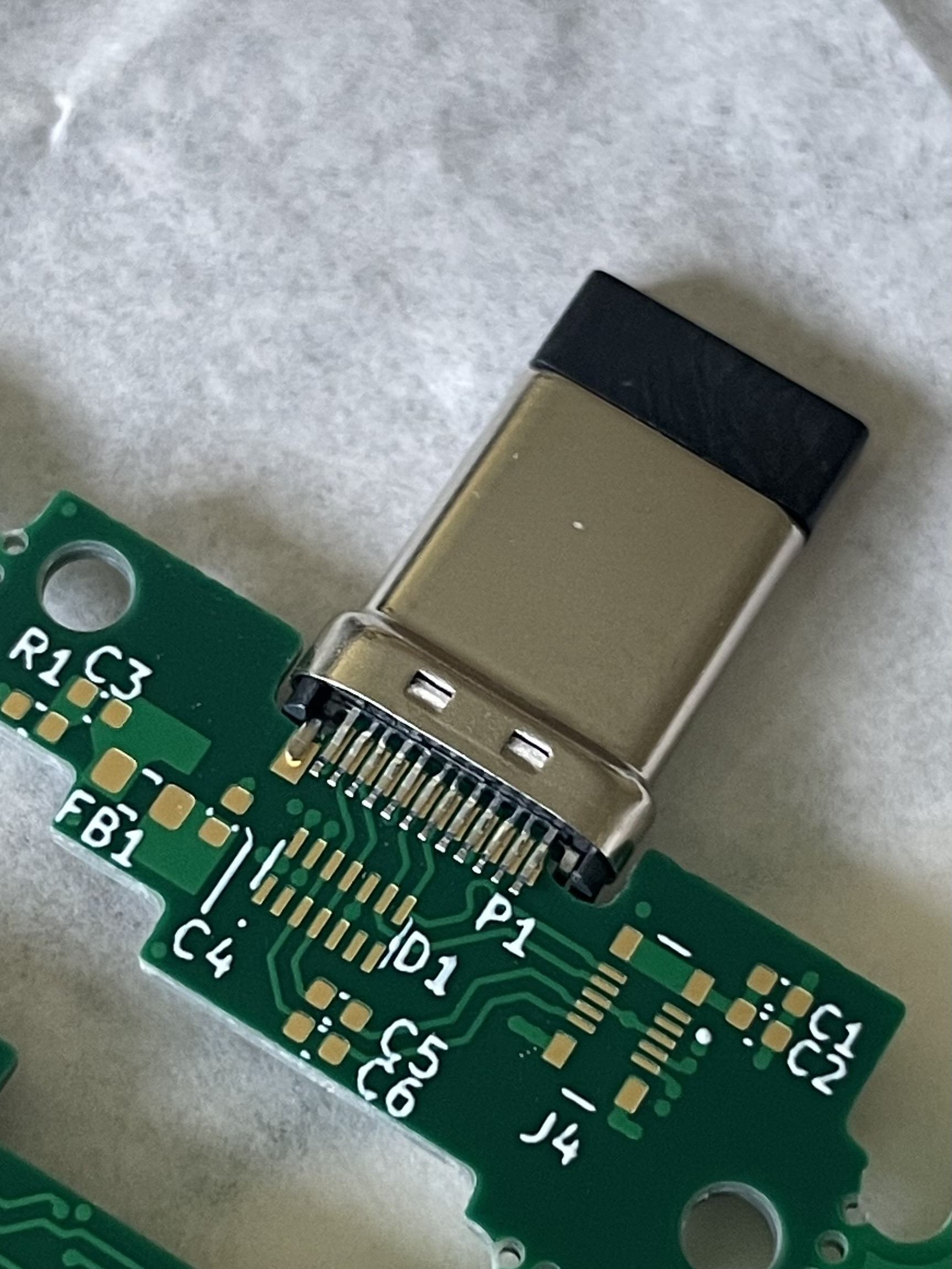Hello :).
I have some of these Molex 1054440011 USB-C edge connectors/plugs of that I somehow don’t know what’s the best way to assemble them onto my PCB.
I have the pads (standard layout from the datasheet drawing) exposed on the stencil but the pins push the paste away a little so I had quite an amount of solder bridges to rework after reflowing them. Could probably a little less solder paste (so smaller openings) and/or differently shaped stencil openings help? Also there are pins (and other components) on the backside so it’s difficult to apply paste accurately on both sides.
The pins are additionally a little weirdly shaped (they bend upwards at the ends so it’s easier to push the PCB between the pins) what makes them less accessible with a soldering iron and the 0.5mm pitch doesn’t make things easier. At least the tension of the pins holds the connector in place while reflowing.
This specific one will primarily only be a one (or two)-off prototype board so I could life with some reworking but maybe someone around here has experience with these things. I also wondered how something like that would be assembled in a larger scale, the pins hold the PCB quite tight between them, I can’t imagine a pick-and-place machine could handle that.
Thanks for reading this post and maybe you have some answers :).

Thanks for your tips everyone! Here’s the complete double sided practice-board:
It’s also the first time I tried double sided reflow, which worked nicely. I did somehow expect things to fall off but they were held in place nicely. I did the side with the larger amount of components first because there are less heavy items, reflowed it, flipped it over, populated the backside and reflowed again. The only thing I didn’t think about is that I couldn’t just use the stencil easily because of the now uneven bottom side, so I just applied the solder paste with a small needle on the syringe since there weren’t too many pads. At the end I assembled the USB connector using the tips you gave here (thanks!). I’m using a cheap (slightly modified) T962 oven and lead-free solder paste for the reflow process.
It’s by the way a simple two layer reference design from framework computer for their expansion card system.